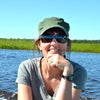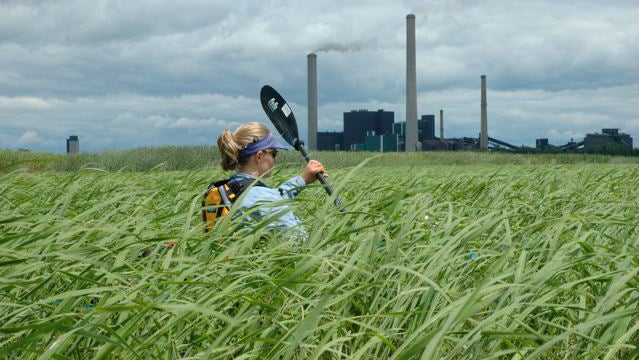In 2009, Danielle Katz paddled the length of the Mississippi River as part of a fundraising effort aimed at improving clean water access in Rwanda.
“I came into that trip with these grandiose ideas about how we can work with communities,” she says. “But there is a big disconnect, between communities in Minnesota and Mississippi, that this is the same river, or that what is happening with the pig farmers in Ohio is effecting the dead zone in the Gulf. It was incredible to travel this river from source for sea, step back and look at the big picture. [Conservation] organizations are doing amazing work in small units, but they’re sort of losing sight of what is happening upstream and downstream.”
With that in mind, Katz began mulling other source-to-sea river trips. Over the course of 2012, Katz and a handful of other boaters attempted to ply 12 vital California rivers from their headwaters to the Pacific Ocean. They were largely successful, completing nine of the trips while three rivers could not be paddled end-to-end due to issues such as restricted access and low water.
The expedition was planned by , a non-profit that Katz and fellow boater John Dye founded in order to magnify their efforts to tie recreational boating with environmental education.
“It was a test case for us,” says Dye of the expedition. “We learned what we could and could not do.” Among the hurdles, he says, was fundraising. But Rivers for Change has been successful in making linkages between conservationists, scientists, and recreationalists.
Specifically, the paddlers were able to collect algae samples during the 12 Rivers in 2012 expedition. The samples were then sent to a freshwater ecologist who studies flow, temperature, and water quality in California rivers. The ecologist, linked to Katz and Dye through the citizen science group , then analyzed the samples as part of his research into climate change and pollutants dissolved in the water column.
Katz and Dye have also lent their boating know-how to California’s Native Plants Society, which they helped discover six previously unknown plant species in the San Francisco delta.
ULTRAMARATHON AS CONSERVATION TOOL
Boaters can choose from a range of ultra distance paddle-sport races in the United States, ranging from the Colorado River 100 in Texas to the 444-mile Yukon River. But none of the organizers of those races are taking the very obvious opportunity to use the events as a call to action to help preserve and protect the watersheds in which they are held.
Rivers for Change is trying to change that with the , a century paddle race from Redding to Chico along the Sacramento River. Katz and Dye are working to make the inaugural event, on May 25, an opportunity to get paddlers involved in conservation work.
“After we paddled the Sacramento as part of 12 Rivers in 2012, it dawned on Danielle and I that we could do a race on the river, so we started working with the California Paddle Sports Council” to pull it together, says Dye.
The race event will include a beach clean-up in Chico at a party spot for college kids known as Beer Can Beach. The group is hoping it can turn paddlers into advocates for healthy, free-flowing rivers by showing them not just the impacts of pollution but the larger issues, especially around the Sacramento river delta, of agriculture, irrigation, fisheries, and hydropower.
The controversial to move water from the delta into the Central Valley through twin 35-mile tunnels is among the topics Katz and Dye are advancing among racers, as is a proposal to raise the Shasta Dam, which would flood upper parts of the Sacramento and McCloud rivers.
Next year, Rivers for Change will expand its focus on the Sacramento River, and the larger issues of agricultural and urban demands on water throughout California, with another source-to-sea paddle. It will actually begin with a climb up Mount Shasta and will end at Golden Gate Bridge, a journey of around 300 miles.


